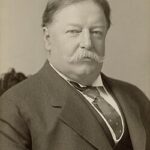The Historic Federal Children’s Bureau Decision
President William Howard Taft signed groundbreaking legislation on April 9, 1912. The Federal Children’s Bureau became America’s first federal agency devoted exclusively to child welfare. This landmark decision placed children’s rights at the forefront of national policy. The bureau operated within the Department of Commerce and Labor under Julia Lathrop’s pioneering leadership.
Addressing Critical Child Welfare Issues
The early 1900s witnessed rampant child labor abuses across American industries. 📊 Census data revealed over two million children working in dangerous conditions. Progressive reformers demanded federal intervention to protect vulnerable youth. Taft recognized the urgent need for comprehensive child welfare oversight at the national level.
Pioneering Federal Child Protection Programs
The Federal Children’s Bureau established unprecedented federal standards for child health and safety. ⚠️ The agency investigated infant mortality rates, child labor violations, and youth health conditions. Bureau researchers conducted nationwide studies on children’s living conditions. Their findings exposed shocking disparities in child welfare across different regions and communities.
Impact:
Transforming American Child Welfare Standards
The Federal Children’s Bureau revolutionized how America approached child protection and welfare policies. 🌍 International observers praised the bureau’s innovative research methods and comprehensive child advocacy programs. The agency’s scientific approach to child welfare influenced similar initiatives worldwide. European nations studied American child protection models for their own reform efforts.
Long-term Legislative and Social Consequences
The bureau’s research directly influenced major child labor legislation throughout the following decades. 📊 Their comprehensive studies provided crucial evidence for the Fair Labor Standards Act of 1938. The agency’s mortality research led to improved maternal and infant health programs nationwide. Social Security Act provisions for children traced their origins to bureau recommendations and advocacy efforts.
Establishing Federal Child Advocacy Precedent
Taft’s Federal Children’s Bureau creation established the federal government’s responsibility for child welfare protection. The decision marked a fundamental shift from state-only child protection to coordinated national oversight. Modern agencies like the Department of Health and Human Services evolved from this foundational precedent. The bureau’s legacy continues through contemporary federal child protection and advocacy programs.
